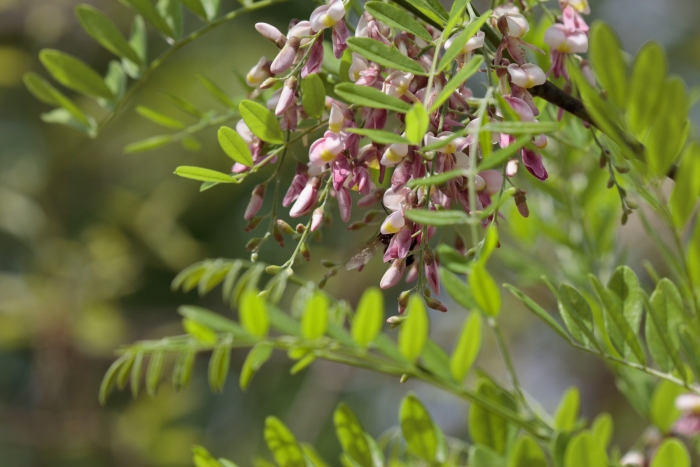Eve’s Necklacepod
(Styphnolobium affine)
Eve’s Necklacepod (Styphnolobium affine)
/
/

Victor Engel
CC BY 4.0
Image By:
Victor Engel
Recorded By:
Copyright:
CC BY 4.0
Copyright Notice:
Photo by: Victor Engel | License Type: CC BY 4.0 | License URL: http://creativecommons.org/licenses/by/4.0/ | Rights Holder: Victor Engel | Publisher: iNaturalist | Date Created: 2017-03-18T13:39:10-07:00 |
















































Estimated Native Range
Summary
Styphnolobium affine, commonly known as Eve’s Necklacepod, is a deciduous small tree or large shrub native to the limestone soils of open woodlands, forest edges, and riparian areas in the South-Central United States, particularly Texas. It typically grows to a height and width of 25-30 feet (8-9 meters), with a rounded canopy and graceful, arching branches. The compound leaves are dark green and provide dappled shade. In the spring, it produces showy, wisteria-like clusters of fragrant flowers that are pink, purple, and white, followed by distinctive, beaded seed pods that resemble a necklace, hence its common name.
Eve’s Necklacepod is valued for its ornamental flowers, attractive seed pods, and adaptability to various soil types, including alkaline soils. It is drought-tolerant once established, making it suitable for xeriscaping and low-water-use gardens. This species is often used in urban landscapes, as a specimen tree, or for naturalized plantings. It thrives in full sun to part shade and prefers well-drained soils. While generally low-maintenance, it can be susceptible to pests like mimosa webworm and fungal diseases in humid climates. Gardeners should be aware that all parts of the plant are toxic if ingested.CC BY-SA 4.0
Eve’s Necklacepod is valued for its ornamental flowers, attractive seed pods, and adaptability to various soil types, including alkaline soils. It is drought-tolerant once established, making it suitable for xeriscaping and low-water-use gardens. This species is often used in urban landscapes, as a specimen tree, or for naturalized plantings. It thrives in full sun to part shade and prefers well-drained soils. While generally low-maintenance, it can be susceptible to pests like mimosa webworm and fungal diseases in humid climates. Gardeners should be aware that all parts of the plant are toxic if ingested.CC BY-SA 4.0
Plant Description
- Plant Type: Tree
- Height: 25-30 feet
- Width: 25-30 feet
- Growth Rate: Moderate
- Flower Color: Pink
- Flowering Season: Spring
- Leaf Retention: Deciduous
Growth Requirements
- Sun: Full Sun, Part Shade
- Water: Medium, High
- Drainage: Medium
Common Uses
Bee Garden, Deer Resistant, Drought Tolerant, Fragrant, Low Maintenance, Showy Flowers, Street Planting
Natural Habitat
Open woodlands, forest edges, and riparian areas on limestone soils in the South-Central United States
Other Names
Common Names: Coralbean, Texas Sophora
Scientific Names: , Styphnolobium affine, Sophora affinis,
GBIF Accepted Name: Styphnolobium affine (Torr. & A.Gray) Walp.